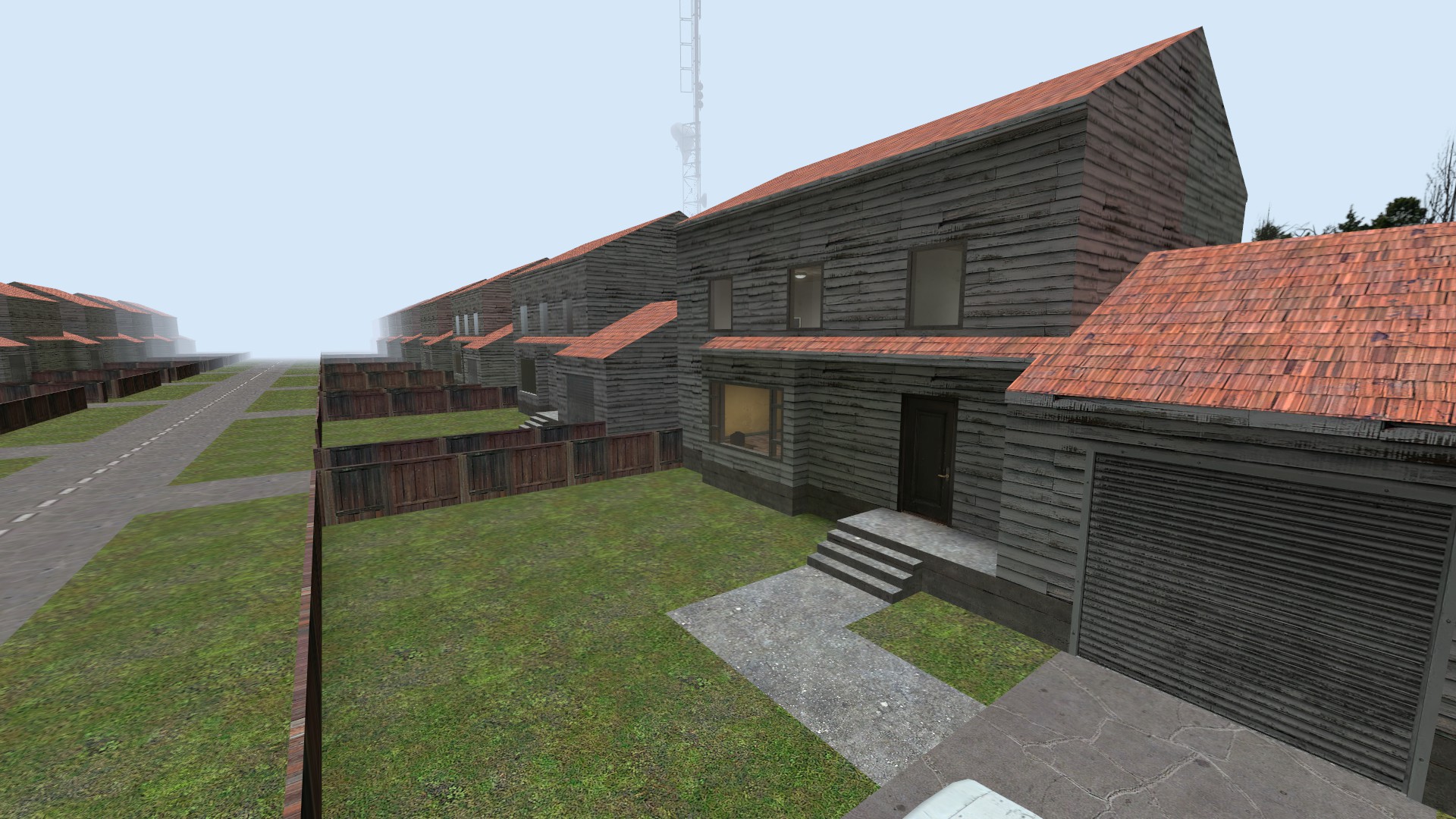HOA Violation
Half-Life 2 Singleplayer
FPS, Scripted Setpieces, Systemic Gameplay
1 Month Solo Project
Released February 21st, 2024
HOA Violation is an action-heavy Half-Life 2: Episode 2 (2007) level in which the player breaks free of a smoke-and-mirrors simulation, finding themselves in a Combine facility that they have to shoot their way out of.
This level was made for level designer Steve Lee's seventh level design jam (found here), which had the theme of "A Surprise". In the spirit of the jam, this level takes advantage of engine quirks to feature a non-euclidean twist.
Download on the Steam Workshop here. At the time of writing, the level has over 1,300 downloads on Steam and has also been downloaded from Itch and Gamebanana.
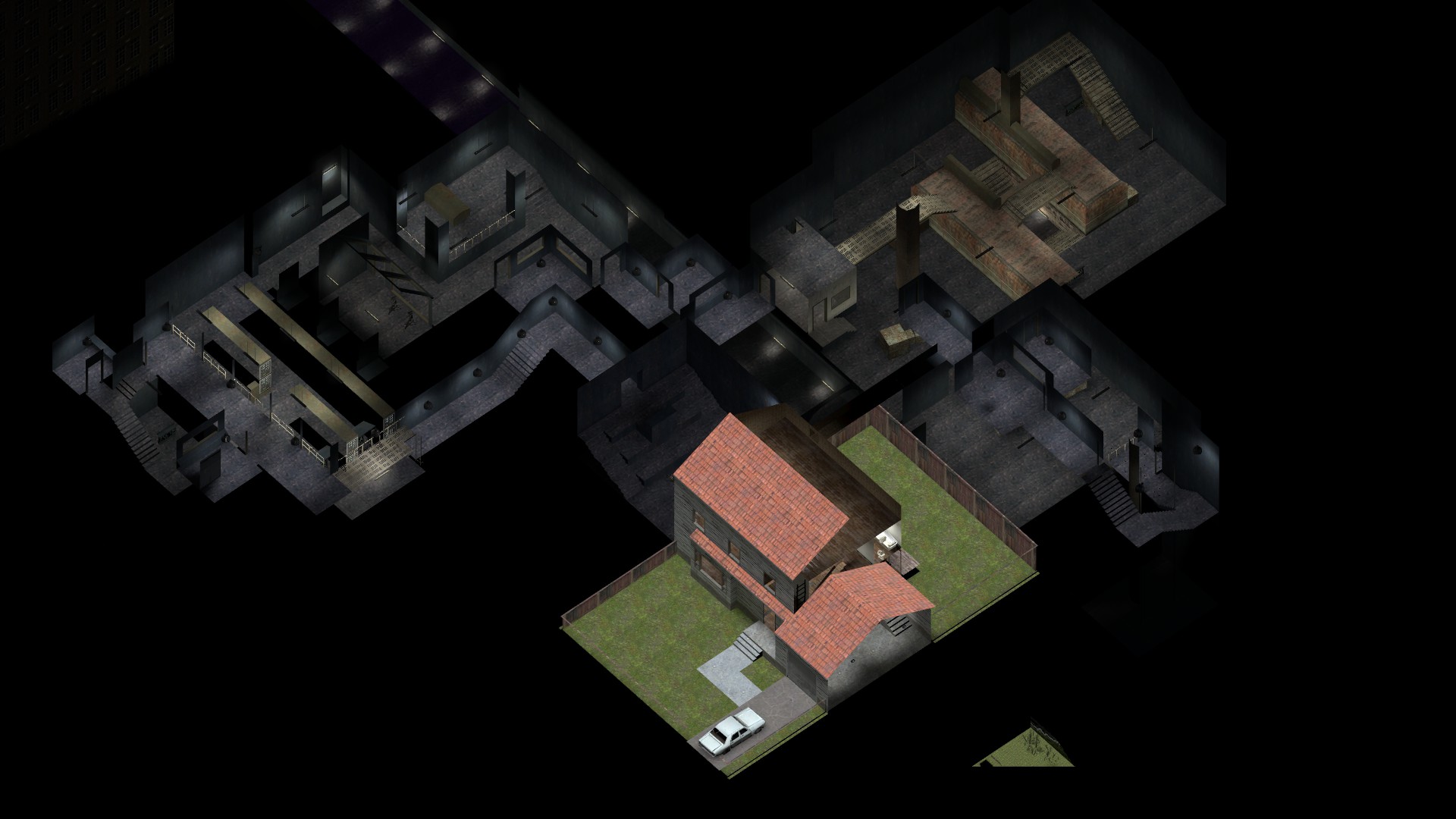

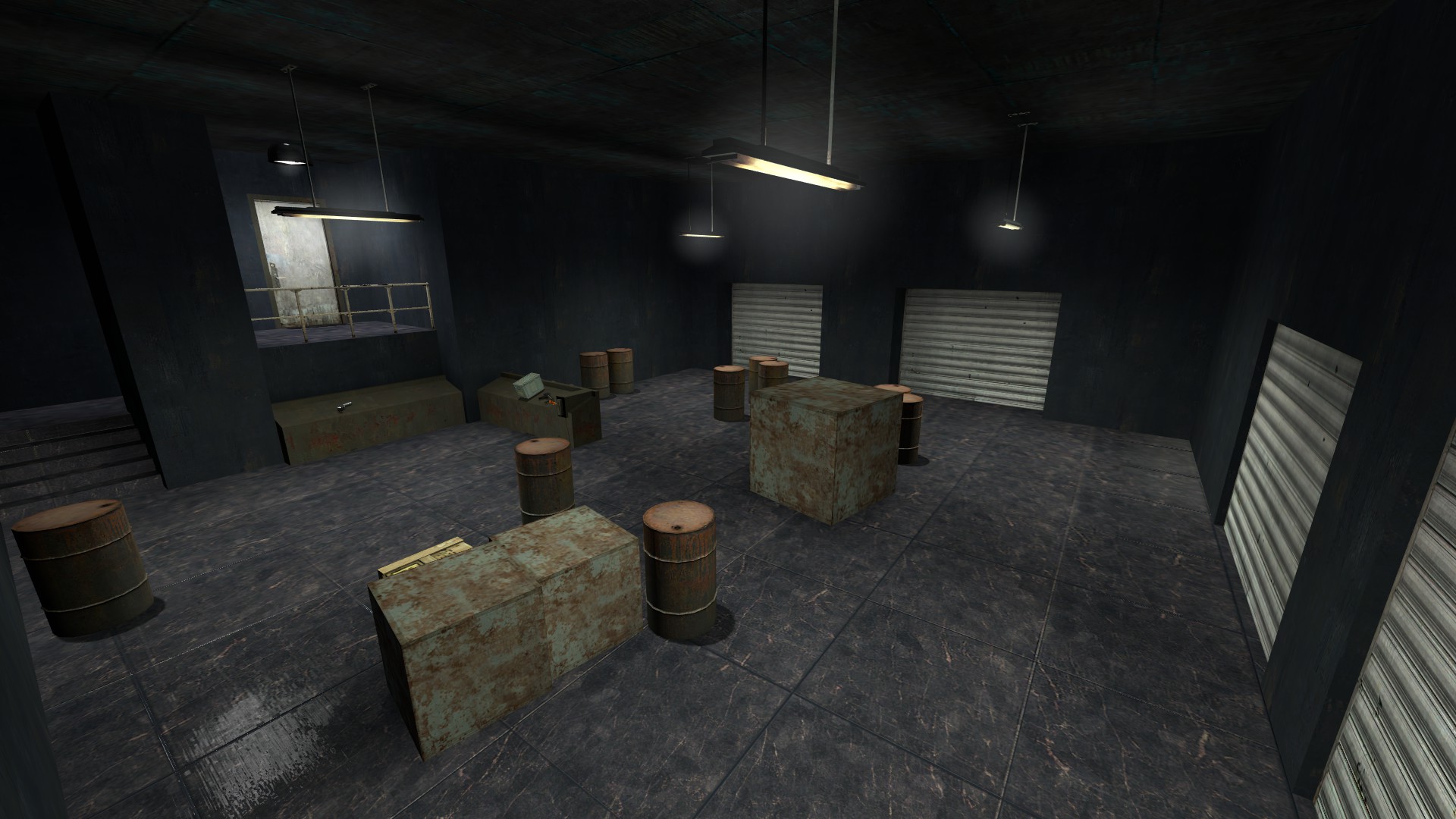


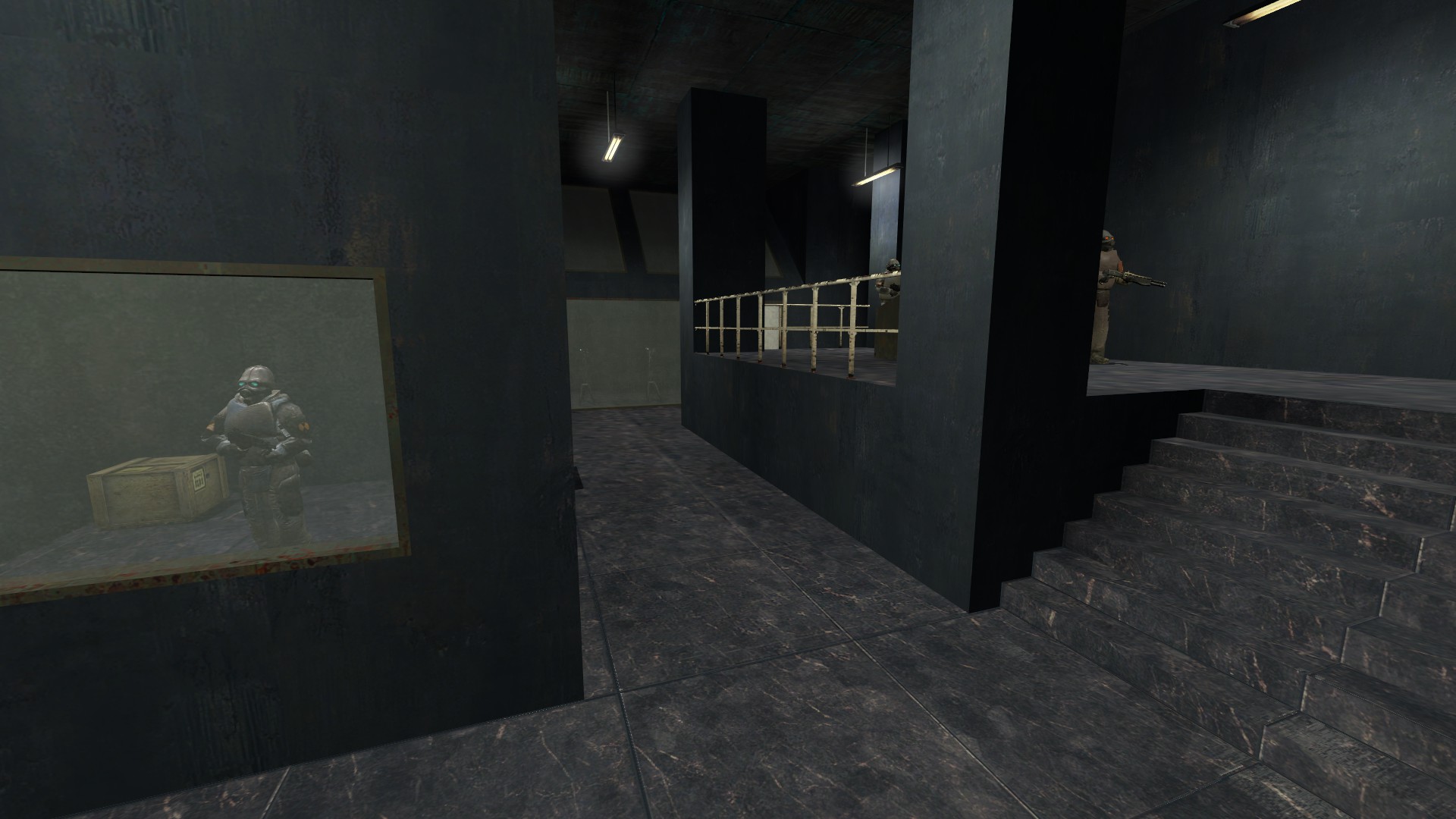
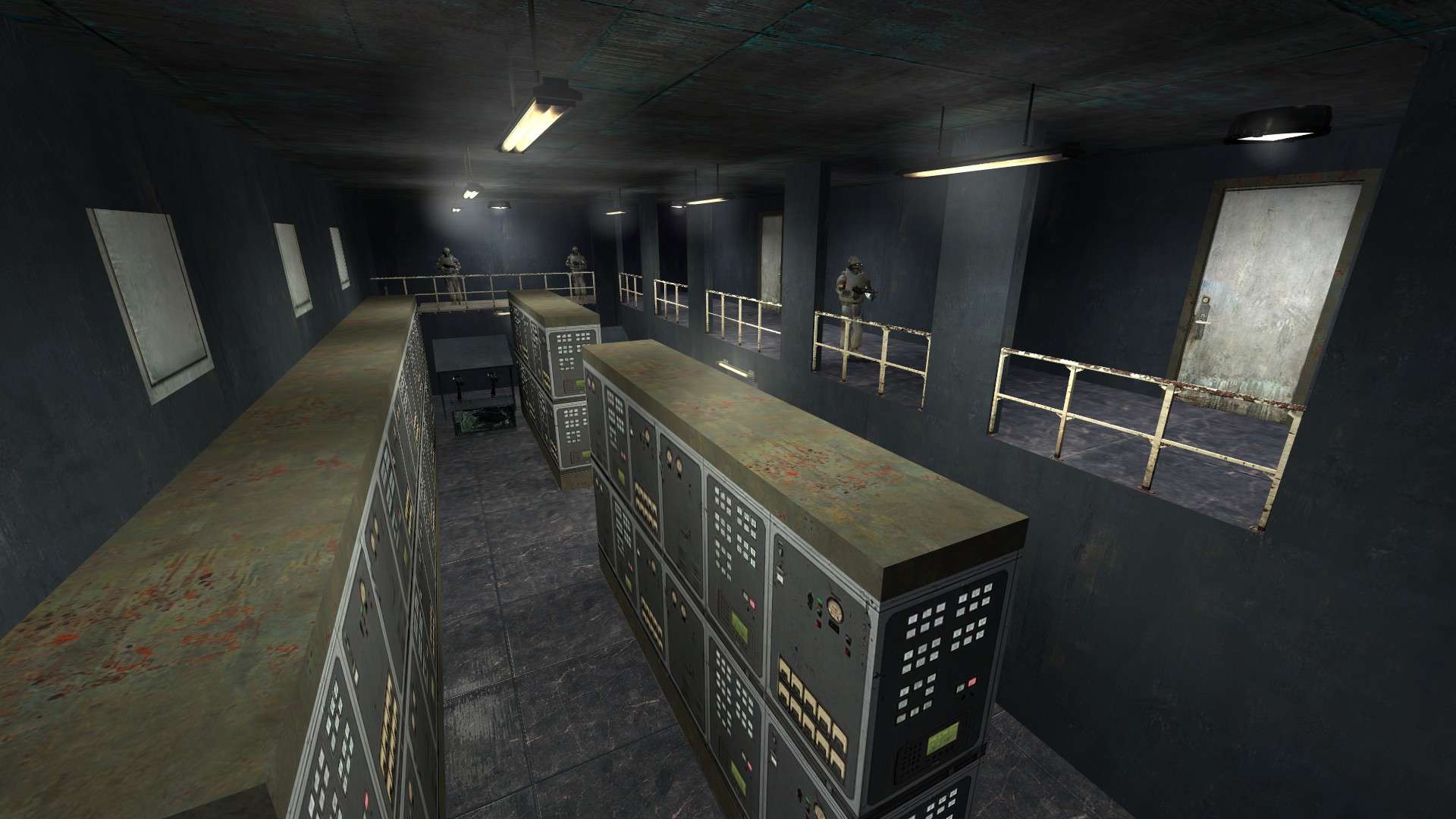





Design
For the "surprise" concept of the jam, I created a level built around an initial plot twist that explodes into FPS action. The twist, inspired by the intro to Arkane's Prey, is that the fully 3D suburb visible around the player's home is fake, and they are instead being watched through one-way glass by the inhabitants of a massive sci-fi facility.
I didn't paper draft the layout prior to implementation, however I did originally plan the level in written format by detailing the sequence of events that the player experiences.
The level was playtested by three other level designers and another three friends familiar with Half-Life 2 over multiple versions. Testers submitted videos that I was able to watch to observe player behavior. The level underwent a wide variety of changes, both big and small, in response to this playtesting.
You can see my original plan and testing notes here.
Combat and Scripting
Half-Life 2 features robust, systemic NPC enemies. As such, adding appropriate complexity and AI hint nodes to the combat rooms created a level of dynamism that is highly responsive to the player's moment-to-moment decision making. Enemies take cover, throw grenades, shoot through glass, and attempt to flank the player, to name a few.
Similarly, the player is given a wide variety of combat options. At the start of the first combat encounter, the player has access to a limited but diverse weapon roster, including a crowbar, a revolver, and an SMG. Prior to the second encounter in a tighter space, the player obtains a shotgun for satisfying close quarter shooting. Prior to the finale, the player obtains the Pulse Rifle, one of the most effective weapons in the game.
Weapon pickups occur outside of combat to avoid auto-equip annoyance. The exception is that enemy soldiers will drop grenades as the player progresses.
Divided into four major combat encounters, each encounter is built around a specific idea. First the player is navigating a multi-leveled warehouse, then a tight space where the player is empowered by shotguns and grenades, followed by a room where the player must dive into a side room to flank a wall of turrets, and finishing off with the player returning to the start house, now in the image of a life-sized dollhouse, to fight off enemies busting down doors and flying through windows.
After this final encounter, the player enters through a newly opened door in their basement, gets into a car, and drives through a tunnel into a sprawling, nighttime city.
Bespoke scripting is used to keep each encounter lively, as enemies reveal themselves and ambush the player at specific locations and timings. This also prevents the scenario in which the player can camp down and clear an encounter from a single location since enemy aggro waits for the player to progress through each room.
Playtesting
As I designed each area, I did some basic self testing to feel out combat arenas and player resources. Once the blockout was playable from start to finish, external playtesting began. Only after gameplay playtesting was concluded was the level fully semi-art-passed.
Playtesters provided me with videos of their playthrough as well as their own thoughts. Playtester introduction was staggered to ensure I had blind players on each iteration, though a few testers played several versions.
A common problem in many parts of the level was that players were practicing an overly cautious playstyle that saw them sniping enemies and grenade checking every corner. I addressed these by providing enemies with stronger cover for bullets and roofs to protect against grenades. I also reduced the collectable ammo that players used towards this behavior. Finally, I introduced the flying "manhack" enemies that would fly into arenas mid-combat and flush players out of cover.
One section of the level was reworked entirely based on my observations of player engagement. The aforementioned room containing a "wall of turrets" was too easy bypassed with grenades or players aggressively pushing through the damage they sustained. It was reworked to still contain the wall of turrets, but they were now part of an impassible barricade that forced players to dive into a side room and push to an upper level where they could drop down on the far side, gaining a satisfying spacial advantage rather than simply pushing directly through the obstacle.
Smoke and Mirrors
The player begins at their home in an idealized, homogenous suburb, seeing far in every direction. In the attic they uncover a mysterious crawlspace that impossibly leads to a massive science facility. From this side of things they are shown one-way windows spying on the home from the facility.
This effect was accomplished by exploiting the Source engine's 3D skybox system, which is traditionally used to project an isolated mini-sized section of the level at 16x size to give a sense of scale within the relatively small level bounds.
In this level, it is used to project a false space and obfuscate the actual level that exists beyond the walls of the skybox.


